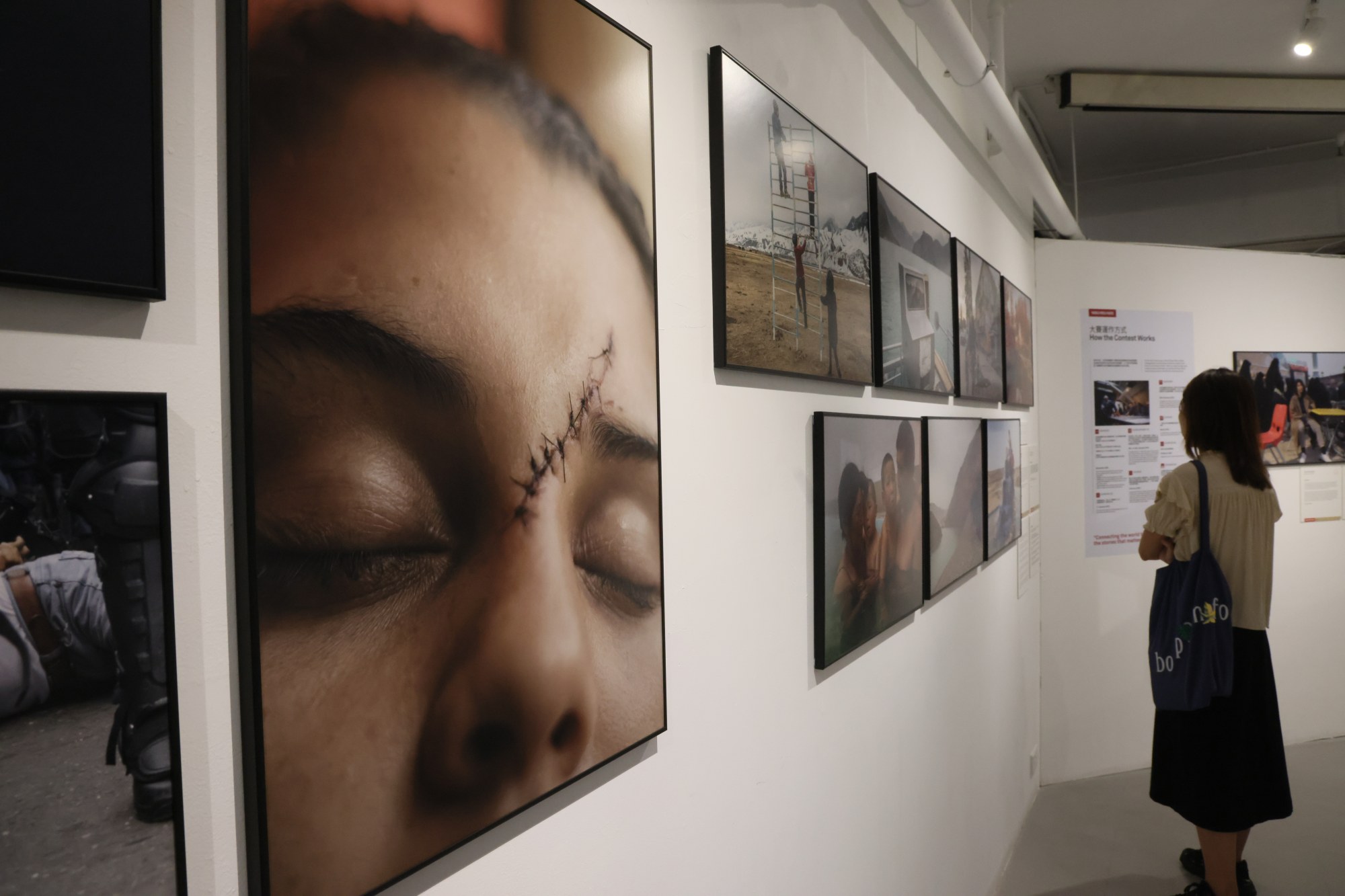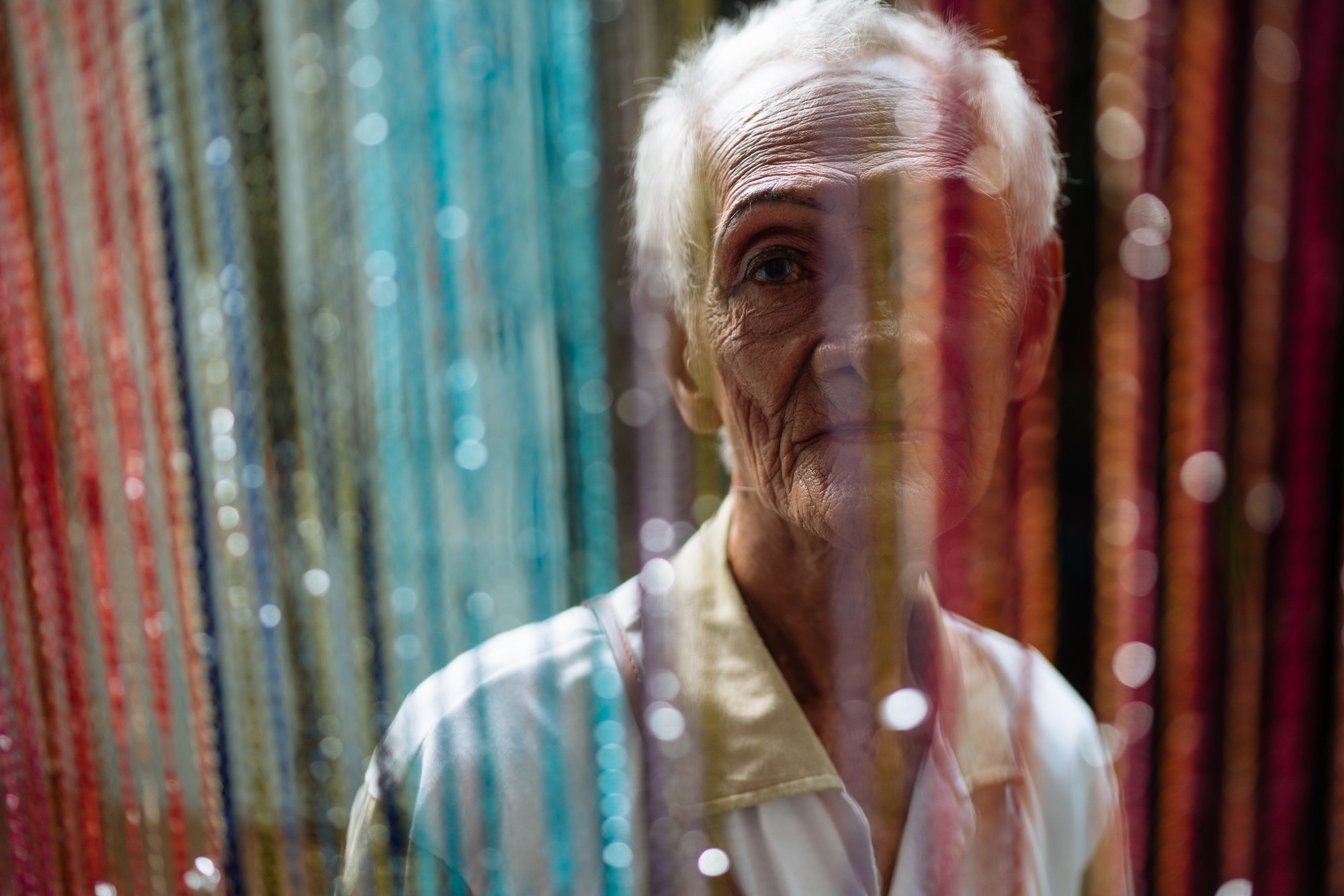
World Press Photo Contest 2023 winners show in Hong Kong shines a light on Ukraine war, life in Taliban-ruled Afghanistan and more
- The World Press Photo Contest winners show is back in Hong Kong, although not without a late change of venue, as happened with the exhibition in 2021
- Shown ‘in the context of press freedom’, curator says, the winning entries cover the Ukraine war, life in Afghanistan, LGBTQ rights, climate change and more
This story contains graphic images.
After last exhibiting in Hong Kong in spring 2021, the World Press Photo Contest has returned to the city with its annual touring exhibition.
Showcasing winning entries from the 2023 competition, this year’s exhibition includes photos depicting the impact of the ongoing climate crisis, the consequences of war in Ukraine, and snapshots of life in the Taliban-controlled Afghanistan.
The exhibition runs until November 24 at Lumenvisum in the Jockey Club Creative Arts Centre in Shek Kip Mei.

As a result of the last-minute decision, representatives from Lumenvisum – a non-profit arts organisation that is the Hong Kong organiser for the global touring exhibition – had to scramble to find a suitable venue, and eventually settled on its own gallery.
“This is an exhibition with global importance,” says Hildy Law Shuk-man, chairwoman of Lumenvisum, of why the organisation reached out to World Press Photo to organise the Hong Kong exhibition.

“In Hong Kong, it’s rare to see such exceptional works, so we think it’s important to showcase them. [It’s also] about cultural exchange – it’s difficult to find works from photographers of such different backgrounds.”
At the time, the university cited “campus safety” concerns and fears of potential clashes, as that year’s winning photographs included five depicting scenes from the 2019 Hong Kong anti-government protests taken by news agency Agence France-Presse’s Nicolas Asfouri.
‘A last resort’: photos of Chinese families’ lives in unfinished buildings
This year’s exhibition, which will be held in 80 cities around the world, features 117 photographs from the competition’s 24 winners and six entrants who earned honourable mentions.
To increase the diversity of winning entries, the World Press Photo competition recently adopted a regional model, with four winners each from Africa, Asia, Europe, North and Central America, South America, and Southeast Asia and Oceania; and four global winners chosen from the regional winners.


The Photo of the Year, titled Mariupol Maternity Hospital Airstrike, is a haunting and heartbreaking image that reflects the real-life consequences of war.
It shows the heavily pregnant Iryna Kalinina on a stretcher, being carried out of a maternity hospital during the Russian invasion of Ukraine – but what the photograph doesn’t show is that her baby, Miron (named after the word for “peace”), was eventually stillborn, and Kalinina also died half an hour later.

One of the photographs shows the 15-year-old Khalil Ahmad raising his shirt to show his scar, the result of an operation to remove his kidney. It was his parents who made the decision to sell his organ for US$3,500, having been unable to afford food for the family.
Another photo, of an 11-month-old severely malnourished baby called Hojatullah, puts Afghanistan’s food crisis in stark display.
An honourable mention in the Asia category, a photograph by Ahmad Halabisaz, depicts an Iranian woman sitting in Tehran with her hair in full display, in defiance of the mandatory hijab law.
“You go to our exhibition today, and you will learn about the flower industry in Mexico and how the pesticides there are influencing the development of children,” says Raphael Dias e Silva, exhibition manager and curator at the World Press Photo Foundation.


“You’re going to learn about LGBT rights in the Philippines; you’re going to learn about alpaca farming in Peru; you’re going to learn about climate change, about migration – good stories, difficult stories. … It’s just this cornucopia of life.”
Part of the agreement for hosting the exhibition in any city is that all the images have to be displayed, Dias e Silva says.
“We are very strong on freedom of information, freedom of the press … so we either exhibit the whole show or we don’t exhibit at all.


“We have had cases that we just won’t exhibit, because local partners will want to cut down or governments will want to cut down parts of the show,” Dias e Silva says.
In fact, the organisation has just faced its first bout of censorship in Europe, where World Press Photo has historically had no issues showing its annual exhibition (the organisation is based in Amsterdam and exhibitions are typically backed by the Dutch consulate).
The Hungarian government barred people under 18 years old from viewing the exhibition in Budapest after determining that a set of photos by Filipino photojournalist Hannah Reyes Morales violated a law against LGBTQ content being displayed to minors.

“[That decision] is, quite frankly, appalling, because it’s a story that talks about community; it talks about resilience in the face of adversity. It’s a beautiful story,” Dias e Silva says.
“It has no explicit nudity, it has no explicit sexual activity, it has nothing of that. It’s just people living their lives, and that is considered too extreme.”
The director of the Hungarian National Museum, which hosted the show, was fired over the matter.
All the winning images will be shown in Hong Kong, but some of the information panels from the exhibition are missing.

Law attributes the exclusion to a lack of space – “If we had space, we would display it,” she says, and it is true that the gallery is packed – although Dias e Silva notes that local sensitivities may have been part of the decision.
“It’s no secret that press freedom has been really under pressure in Hong Kong for the past few years,” he says.

“[And] unfortunately, as we’ve seen now with the RSF [Reporters Without Borders]’s Press Freedom Index, globally, press freedom is going from bad to worse to worse. If anything, it makes our work more important.
“The work that we’re exhibiting today can only be made in the context of press freedom, so by showing this, we’re also advocating the importance of this fundamental right,” he adds.
“We’re trying to talk about these values to as many people as possible, to inform the public about what’s happening in the world, which is what journalists do. That’s why we’re trying to elevate the work of our winners every time.”
“World Press Photo Exhibition 2023”, Lumenvisum, L2-02, Jockey Club Creative Arts Centre, 30 Pak Tin Street, Shek Kip Mei, Kowloon. Tue-Sun 11am-1pm and 2pm-6pm. Until November 24.

